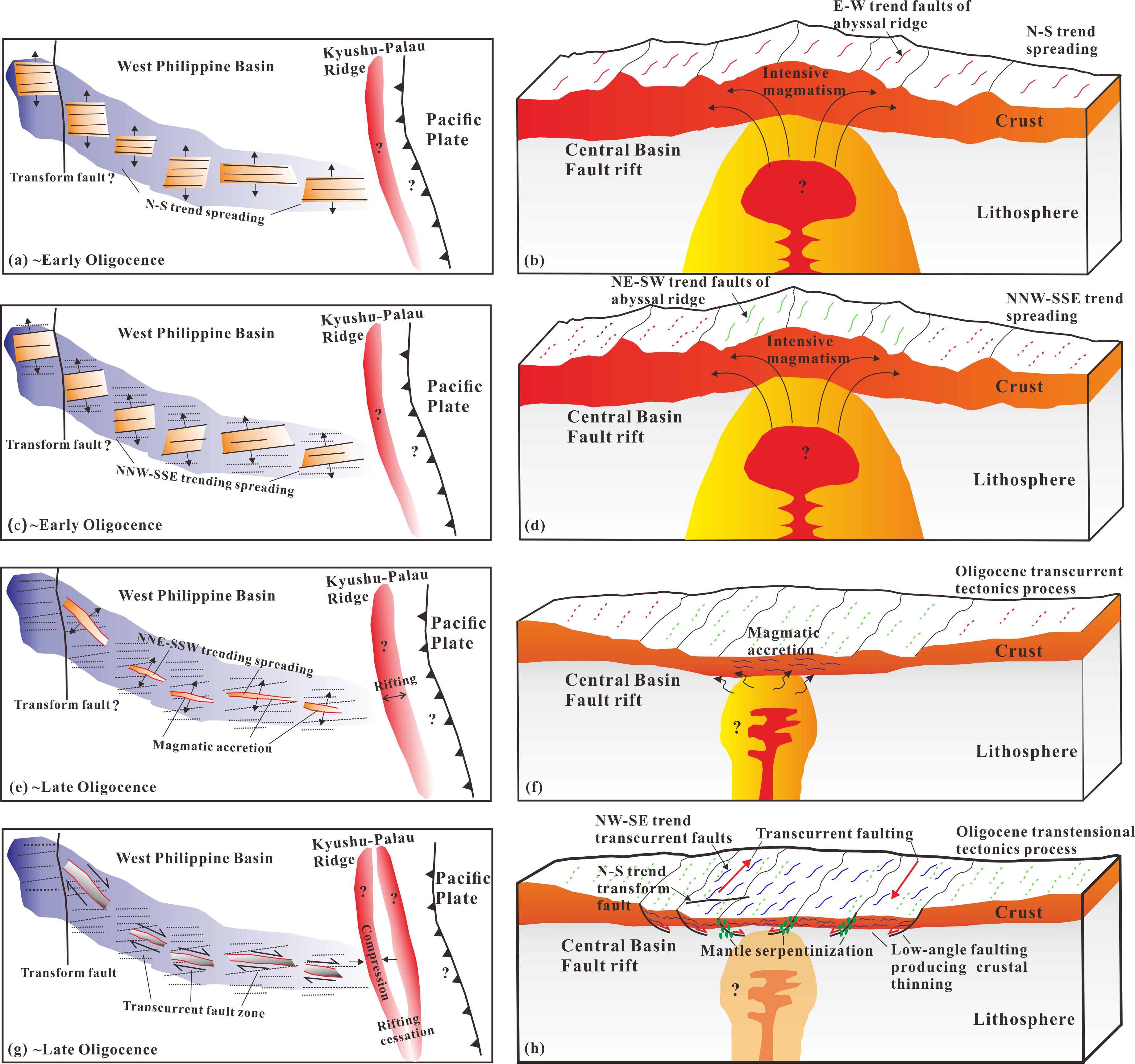
Central Basin Fault (CBF), the most striking bathymetric feature of the West Philippine Basin (WPB), records the latest evolution in the Oligocene of this largest basin in the Philippine Sea Plate.
However, the origin and dynamic mechanism of the Oligocene tectonic episode in the CBF rift remain highly controversial because the detailed sedimentary and intracrustal reflectors and upper crustal architecture along the CBF rift have not been constrained due to the lack of observed geophysical data. Moreover, the Oligocene extension episode of the CBF rift was a complex evolutionary process, influenced by both the oceanic crust of the WPB and the Kyushu-Palau Ridge (KPR).
A research team led by Prof. DONG Dongdong from the Institute of Oceanology of the Chinese Academy of Science (IOCAS) has recently provided new insight into the evolutionary mechanism of the Central Basin Fault rift. Results were published in Marine and Petroleum Geology on Apr. 19.
The researchers used the latest multichannel seismic data that span from oceanic crust domains, and the CBF rift to the KPR to analyze the sismostratigraphic sequences and the geometries of acoustic substrates. Major horizons with large amplitudes interpreted in seismic profiles show unconformity both within the sediments and at the top of the basement.
In addition, three groups of prominent intracrustal reflectors were identified to illustrate typical low-angle faults and layered intracrustal structures, and the latter display as inclined and mounded features, which are interpreted as a result of tectonic processes, including later magmatic accretion and transtensional tectonics within the acoustic substrate.
The researchers proposed that relatively homogeneous intracrustal reflections may correspond to an area of abundant magma supply during major spreading period of WPB. However, a widespread discrete, layered and high-amplitude intracrustal reflector is present in the CBF rift that can be interpreted as an area of weaker and unstable magma supply after the major spreading period. In KPR, the anticline that appears within the stratigraphic infills of the basins serves as evidence of transtensional faulting.
They finally established the Oligocene evolutionary model of WPB during a later transcurrent period due to Oligocene magmatic accretion followed by transtensional tectonics.
"Our study implies that the evolution from the West Philippine Basin spreading to cessation is mainly controlled by variations in magma supply rate and tectonic processes near the spreading center, which essentially originates from the rollback of the Pacific slab and new back-arc basin formation," said ZHANG Zhengyi, first author of the study.
"How the model evolves from back-arc spreading to cessation currently remains a fundamental question in marine geology. Our study provides one of the best cases to study the transition stage for the evolutionary model of back-arc basins, which can also help to resolve the above question," said Prof. DONG.
The research was mainly supported by the Strategic Priority Research Program of CAS and the National Natural Science Foundation of China.

Tectonic evolution along the CBF rift from spreading to cessation. (Image by IOCAS)

86-10-68597521 (day)
86-10-68597289 (night)

52 Sanlihe Rd., Xicheng District,
Beijing, China (100864)

